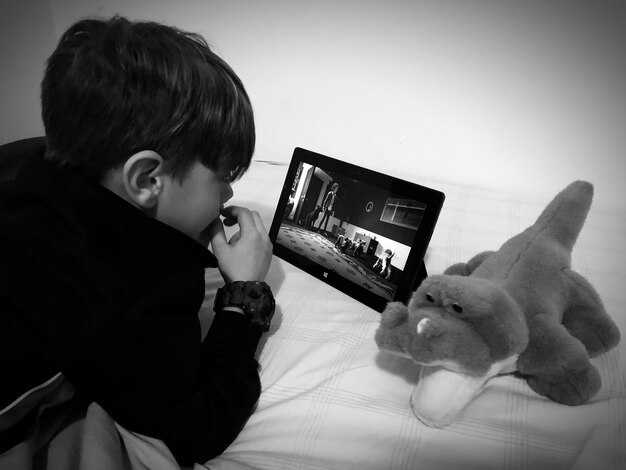Begin with a common misconception. When someone pulls away—stops replying to messages, goes quiet after a night of closeness, or physically leans back in a conversation—the instinct is to interpret that distance as lack of care. Yet what often appears as emotional absence is actually a form of protection. What looks like coldness is frequently armor: a nervous system signaling, “This is too close; I need to back off.” For people who tend to avoid intimacy, closeness can feel like approaching a fire—comforting on one level and terrifying on another. They want the warmth, but remaining close feels like a risk of being burned, so they retreat—not because they dislike the heat, but because they doubt they can survive it. That contradiction is the source of confusion: they crave connection and then flee from it. They may send a tender late-night message and disappear the next day, profess care and then vanish for a week. Push and pull, near and far, leave the other person dizzy and doubting themselves. Avoidant actions are commonly mistaken for indifference, but more accurately they’re fear disguised as distance—the body’s instinctive braking even while the heart presses the accelerator. Keep this distinction in mind: indifference says “I don’t care”; avoidance says “I care so much it scares me.” Failing to see the difference leads to misreading signals, chasing people who aren’t ready, or internalizing their withdrawal as personal rejection. Recognizing avoidance as armor gives the power to choose how to respond. Consider the illusion that fools most people: detachment. When someone with avoidant tendencies pulls back, the mask they wear is convincing enough that others assume the role fits the person. Silence becomes apathy, a shrug becomes rejection, and the implication “I don’t need you” is taken at face value. In truth, that mask is defensive—what looks like indifference is often protection. Think of a turtle retreating into its shell: to an observer it is withdrawal; to the turtle it is survival. Subtle signs include unread messages despite apparent online activity, steering conversations away from emotional topics, or consistently leaning away when the other leans in. Those behaviors feel like rejection to the recipient, but to the person avoiding closeness they feel like safety. Behind a composed exterior there can be racing anxiety. Paradoxically, avoidant people often long for connection; the closer things get, the louder their alarm bells ring, so retreat becomes the default response—not because the other person isn’t valued, but because the nervous system screams “too close, too soon.” They protect themselves with jokes, vagueness, or half-hearted plans; these are not proofs of indifference but of self-preservation. Picture someone at the edge of a cold pool who only dips a toe instead of diving in—their caution is survival, not a statement about the pool. If that caution is personalized, it morphs into self-doubt: “If I were more interesting they’d stay,” or “If I were more lovable they wouldn’t run.” But their pattern is about their wiring, their history, and a learned association of intimacy with danger. Seeing avoidance as armor rather than absence changes everything: distance no longer becomes a verdict on worth, and there’s no need to keep proving oneself to someone sheltered by a shield. Then comes breadcrumbing—one of the most maddening behaviors in avoidant dynamics. Instead of offering a full, nourishing connection, they leave small traces: a like on a story without responding to a message, a late-night “thinking of you” that never turns into a plan, vague promises to hang out that never materialize. Those morsels keep someone following, just enough to sustain hope and not enough to satisfy. From the avoidant perspective, crumbs are safe; they allow tiny doses of contact without the exposure of genuine intimacy. It’s like being offered a crust outside a bakery rather than a seat at the table—momentarily comforting but never truly fulfilling. Breadcrumbing breeds confusion: “If they didn’t care, why reach out at all?” Those small signals are designed to keep a connection alive while avoiding full commitment. They maintain control and soothe loneliness without risking vulnerability. For the person on the receiving end, it feels like emotional starvation, and each small gesture is replayed and inflated into proof of more. Breadcrumbing works only when it’s accepted; those crumbs hold power because they’re given significance. Yet what those crumbs actually reveal is fear, not love. The key question becomes: how long will someone subsist on scraps instead of insisting on a proper meal? Crumbs are not the same as genuine affection, and until the choice is made to refuse them, one remains stuck, hungry. Affirm this plainly in your mind: a full, consistent connection is deserved, not scattered tokens in the dark. Moving from crumbs to microdoses of intimacy: if breadcrumbing scatters scraps, microdoses ration closeness. This pattern offers just enough connection to keep the relationship breathing, but never enough to sustain it. Examples include heartfelt messages at night followed by morning silence, a sudden vulnerable conversation succeeded by days of detachment, or weekend warmth replaced by a weekday of distance. For someone for whom intimacy equals danger, large quantities of closeness overwhelm the system, so closeness is parceled out like water in a drought—sips instead of a steady stream. These intermittent sips create emotional whiplash: after a night of tenderness the person feels elated, then despondent when silence returns, doubting whether the intimacy was real. The moments of vulnerability are genuine, yet unsustainable; the retreat that follows is a protective response, not a denial of feeling. The metaphor is a candle lit and then snuffed—warmth and light that are snatched away by fear. The crucial decision is whether to live on these microdoses. They can feel intoxicating but they never provide lasting nourishment, stability, or depth. Control over another’s fear isn’t possible, but control over one’s own boundaries is: one can demand consistency instead of fleeting moments. Microdoses are evidence of someone else’s fear, not of a lack of worth. Recognizing that lets one stop internalizing the pattern and start enforcing limits, because authentic love is not delivered in rationed portions; it pours, it grows, it fills. Enter the push–pull choreography at the heart of many avoidant relationships. One day closeness floods in—late-night messages, intimacy, connection—and just as things feel steady, the other person withdraws, cancels, goes quiet. This pendulum swing between approach and retreat is predictable: desire pulls them forward, fear snaps them back. The push feels intoxicating and creates a compulsive hold; the pull generates confusion and self-doubt. It’s not a sign that something was done wrong but rather the nervous system’s attempt to manage the tension between longing and threat. Each stretch toward closeness increases tension until the elastic recoils, producing the very distance that hurts the partner. The remedy isn’t to keep trying to control that rhythm but to step away from trying to choreograph someone else’s moves. Declare a personal rhythm that honors steadiness: seek relationships that don’t yo-yo between feast and famine, that offer reliable presence rather than emotional roller coasters. Next, consider ambiguity—one of avoidance’s favorite tactics. Staying half-in and half-out keeps everything possible and nothing defined. Phrases like “we should hang out sometime,” “I’m not into labels,” or “let’s see where this goes” create a dimly lit space where no commitment is required. Ambiguity is a shield against accountability: clarity demands courage, an answer of yes or no, while staying undefined avoids the risk of failure. But ambiguity protects the avoidant partner at the expense of the other person, leaving them in limbo, decoding signals that were never intended to be precise. It’s like being led through a garden at dusk—shapes and flashes, but never the full view. Waiting for the light to come can become an exhausting, memo-less endurance test that drains emotional energy. Some mistake ambiguity for freedom—no labels, no pressure—but freedom without definition often results in confusion rather than liberation. Real freedom grows from boundaries; a fence doesn’t imprison a garden, it protects it so life can flourish. Clarity doesn’t kill freedom; it creates a secure space where both people can breathe. Ambiguity is avoidance masquerading as casualness. The power lies in refusing to live in someone else’s half-light: asking for clarity, saying what is needed, and insisting on a relationship that grows in daylight instead of shadow. That leads to the central dilemma in avoidant dynamics: the tug-of-war between freedom and intimacy. On one side is the wish to remain unbound, to keep options open; on the other is the yearning for closeness, safety, and depth. Both are human and valid, but for someone who tends to avoid closeness they can feel mutually exclusive. Freedom warns “don’t be trapped,” while intimacy urges “don’t miss love.” The struggle becomes how to keep a garden protected without blocking its sunlight. The healthiest relationships allow both needs to coexist: individuality and connection, autonomy and attachment. Avoidance often confuses intimacy with invasion, so the retreat feels like preservation rather than rejection. The false choice—freedom at the cost of love or love at the cost of freedom—need not stand. Boundaries are the bridge, delineating what is personal and what is shared, creating a container in which both space and closeness can thrive. Secure love feels spacious and steady: “you get to be you, I get to be me, and together we choose to walk forward.” If someone continually withdraws into distance, it’s possible to acknowledge their fear while refusing to make it a prison: honor both needs and demand the intersection where both can be met, or walk toward someone who can provide both. Having mapped the terrain—armor, crumbs, microdoses, push–pull swings, half-light ambiguity, and the freedom–intimacy tension—the final imperative is clarity. Patterns explain behavior but don’t excuse harm. Understanding why someone retreats doesn’t obligate acceptance of their distance. Empathy for their armor doesn’t require starving outside of it. Clarity is the switch that lights the room and reveals what’s real: choosing a full meal over scattered crumbs, refusing to equate a social media like with intimacy, and rejecting perpetual “maybes” in favor of explicit commitment. Clarity can be frightening to someone avoiding commitment, but it liberates the other person. Asking direct questions—“What are we?” “What do you want?”—risks shattering a fantasy, but it yields truth, and truth is the fertile ground for genuine connection. Reflect: Am I surviving on crumbs? Waiting in half-light? Tolerating push–pull and tiny doses because fear keeps me asking for less? If so, treat this as an invitation—from within—to choose clarity over confusion, courage over limbo, and wholehearted love over rationed affection. Continuing to accept ambiguity and crumbs costs time, nourishment, and the chance at a steady, flowing relationship. Choosing clarity and firm boundaries reclaims time, restores self-worth, and opens the possibility of a love that is both safe and expansive. Be bold enough to see avoidance for what it is—armor, not absence—and then be bold enough to decide what is acceptable in response. One cannot remove another’s shield, but one can let go of illusions, stop waiting for scraps, and insist on a feast. Step out of twilight into the light: the goal is not to repair someone else’s pattern but to honor one’s own values. Stand in clarity even if it brings discomfort; insist on love that is free and close, safe and deep. Remember: avoidance may shield them, but clarity will protect you—choose it, declare it, live it.



 How Avoidants Secretly Stay Connected to Multiple Partners">
How Avoidants Secretly Stay Connected to Multiple Partners">

 Relacionamentos Superficiais NÃO Dão Certo!">
Relacionamentos Superficiais NÃO Dão Certo!">
 Por que o Contato Zero Afeta os Evitantes com Força (E o Tempo Trabalha Contra Eles) | Estilo de Apego Evitante">
Por que o Contato Zero Afeta os Evitantes com Força (E o Tempo Trabalha Contra Eles) | Estilo de Apego Evitante">
 Como a Culpa o Impulsiona a Obsessar em Alguém que Você Não Pode Ter">
Como a Culpa o Impulsiona a Obsessar em Alguém que Você Não Pode Ter">
 Por que o Evitativo Sempre Volta. (Você é Inevitável)">
Por que o Evitativo Sempre Volta. (Você é Inevitável)">
 Nunca namore ninguém sem estes sinais verdes!!">
Nunca namore ninguém sem estes sinais verdes!!">
 10 Shocking Signs That’s NOT LOVE, It’s Limerence">
10 Shocking Signs That’s NOT LOVE, It’s Limerence">
 5 things MAKE or BREAK your Relationship">
5 things MAKE or BREAK your Relationship">
 Never Take an Avoidant Back If They Do These 5 Things | Jordan Peterson">
Never Take an Avoidant Back If They Do These 5 Things | Jordan Peterson">
 Childhood Neglect Makes You "Play Small" in Relationships (4-video compilation)">
Childhood Neglect Makes You "Play Small" in Relationships (4-video compilation)">
 The EASIEST way to FIX your FIGHTS in your Relationship">
The EASIEST way to FIX your FIGHTS in your Relationship">